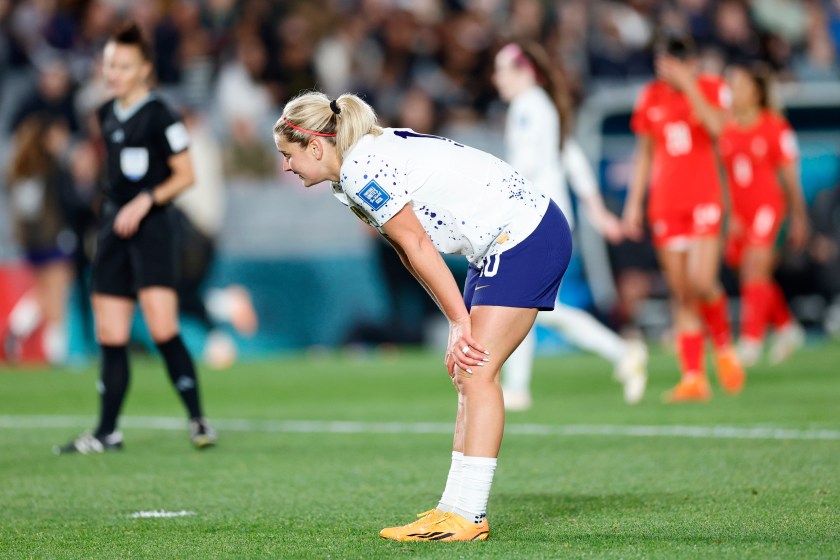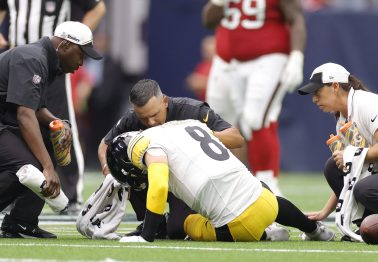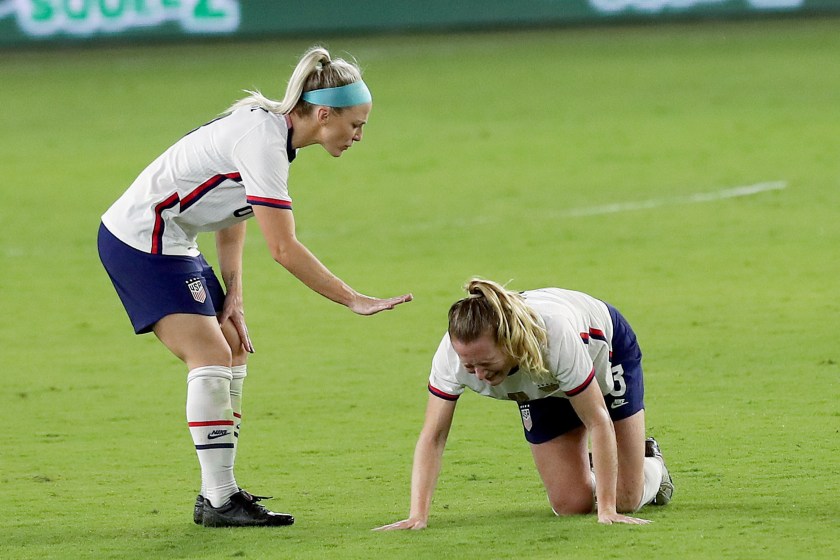The 2023 FIFA Women's World Cup in New Zealand and Australia is coming to a close, and something has felt off about the tournament.
Despite the dazzling goals and high-flying highlights, something feels missing from this World Cup action. In fact, it's not something that's missing. It's several someones. Up to 30 players are missing the World Cup due to ACL injury, and that's the low estimate. Some place that number at closer to 37.
Many championship contenders are missing some of their best players because of tragic ACL injuries. England is without two starters, and the U.S. Women's National Team was lacking Sam Mewis, Christen Press and Tobin Heath, among others.
So what is the ACL? Why are ACL injuries so common in women's football? And is there anything that can be done to stop it?
Explaining ACL Injuries
ACL stands for the anterior cruciate ligament, the ligament running through the center of your knee. It is one of four major ligaments in the knee, and it helps stabilize your knee joint by preventing your shin from moving too far forward. Gross, right?
ACL injuries occur when the ligament is stretched, resulting in a full or partial tear. Such a tear is usually accompanied by a loud popping sound and sharp pain. Those who have felt the pain of an ACL tear are likely to never forget it.
After the ACL tears, the knee becomes swollen and sensitive. Though ACL repair surgery is not always required, it is often recommended by medical professionals to prevent further injury. ACL rehabilitation can take anywhere from seven to 18 months, depending on too many factors to list here.
For most professional women's soccer players, the rehab time is about seven to nine months. Once an athlete tears their ACL, they also take on a higher risk of re-injury than someone who has never torn their ACL.
RELATED: Injuries to Watch in NFL Week 5
None of that sounds fun, for men or women. So why are the women suffering more?
Why Women's Soccer Players Suffer More ACL Injuries Than Men
Doctors estimate that female soccer players are between two to eight times more likely to suffer a non-contact ACL injury than men.
Some speculate there is a hormonal connection, while others chop it up to simple anatomical differences — a wider pelvis resulting in a slightly tweaked femur angle, resulting in more tension on the ligament.
Sports physiologist Dr. Emma Ross, for her part, believes that estrogen plays a larger role in women's ACL injuries than previously thought.
"When estrogen is elevated in the menstrual cycle, and that happens in about the second week, it can affect the stability of the joints...It can interfere with the collagen in our joints and create looser, more lax joints. The loose joint is, therefore, less stable and more inclined to injury."
Differences in female foot shape may also act as a compounding factor.
In addition, women tend to have straighter legs than men, and that difference in leg shape is another possible culprit. But the problem hasn't been studied enough for a definitive, one-size-fits-all answer.
Not all of the factors are strictly physiological. As the popularity of the women's game increases, the workload of individual players has also increased — athletes playing more games at a higher level against better competition, resulting in more fatigue. This translates into more opportunities for injury to occur, resulting in more ACL injuries.
Vivianne Miedema, a star player for the Netherlands who suffered an ACL injury in December that forced her to miss this year's World Cup, told the New York Times that nearly 60 players in Europe's five major leagues had torn their ACLs — and she wants change.
"It is ridiculous," she said. "Something needs to be done."
But what does change look like?
What Can Be Done to Prevent ACL Injuries in Women's Soccer?
One way to fight the women's ACL epidemic involves allocating more money for more studies, improved training and better facilities to protect female athletes. Since its inception, sports medicine has been male-focused, leaving the nuances affecting women's knee health largely overlooked.
More money for women's teams would also result in better fields, better nutrition and better trainers for the players. Field condition is a crucial but silent factor in injuries — why else do you think the MLS is making sure that their new starboy, Messi, only plays on natural grass? Because they know that an injured Messi is bad for business, just as how injured female stars are bad for the women's game.
But it goes beyond the pitch. Training is key to preventing injury. Many young male stars are identified before they are even teenagers and given access to top trainers, techniques and facilities at a young age. That results in a stronger — and less injury-susceptible — body when they go pro. Being introduced to those physical stresses at a younger age gives the body more time to develop defenses such as stronger tissue, ligaments and joints. If more female talent was identified and protected at a younger age, then more injuries likely could be prevented.
Another approach involves designing cleats specifically to fit the female foot. Football boots are generally designed for men's feet but not for women's, and slight anatomical differences can play a role in how safe the boot is for use.
With the women's game exploding in popularity, there is, of course, an increase in revenue from the women's game. Therefore, it only makes sense to protect this revenue and the players who are generating it by finding ways to improve women's training to lessen the likelihood of injury.
The problem is yet to be fully understood, but what's easy to understand is this: If all of the top soccer players keep suffering the same injury, something must be done about it.




